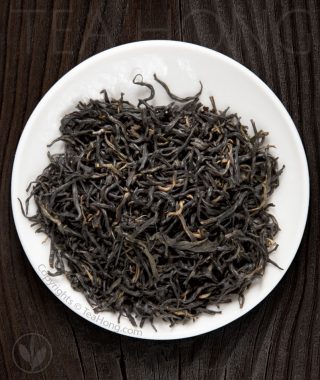Select a tea by category, region, taste or TCM character
At TeaHong.com, we try to put ourselves in our customers’ shoes. Different people have different priorities. Each sees the world differently. Naturally when it comes to selecting a tea, your criteria may not be the same as that of any other tea drinkers. That is why we group our tea products in different ways so you can see them in the context that is closest to how you think when selecting a tea.
Selection by Tea Category
The most common way to group different varieties of tea is by the category of processing method with which they are produced. Some call it Tea Classification, others Tea Categorisation. We think the later label is semantically more accurate.
Many connoisseurs and tea specialists organise their collections with this concept.
The above chart shows the five main categories: Green, Black, White, Pu’er ( Post-Fermentation ) and Oolong teas. Click the pie chart to browse the category of tea, click on your choice and enjoy the browse!
Need more info about a category before seeing the products? Here are some articles:
Selection by Taste
Teas are like raw gems. The true taste of each awaits the revelation made possible by the way you make it. Your personal need matters. It may change according to mood, time of the day, and occasions.
Experience and explore
Begin by tasting a few selections using various infusion styles to gain more specialist understanding of the finesses and differences. Relate this with your personal preferences and you will gradually carve out a direction in building your own repertoire of tea. This will be your very own line that best suits your taste and your needs. With repeated usage your senses and perceptions will deepen. This will empower you with the connoisseur skill to easily master yet more varieties to continue to gain levels in the vast world of tea.
Selection by TCM Characters
This is for those who understand the needs of answering the voice of the body. A well customised and balanced collection not only helps to maximise tea’s health benefits, but also tea’s gastronomic qualities. At Tea Hong, we categorise our collection by traditional Chinese medicinal character.
Information on a tea page
Detail information on each tea page includes a description, taste profile, infusion tips and a few properties described with icons. This article gives a general orientation in case you want to prepare yourself before browsing.
Customer Reviews
Yet another way to get an idea is to see how other customers see our products. Read a few random reviews they have posted in this site, and click on the link to go to the product page:
Himalayan Finest Flowery, orthodox black tea
Great Strong Character
I first tried this with 2g in 100mL gaiwan for 5 minutes. The aroma reminds me of traditional style phoenix oolong. In the mouth as well, it has this flowery/fruit-like character, though of course not as prominent as those of oolongs. As I drank, I also found certain similarities with white tea (Zhenghe). Combine them with the strong taste (at this parameter I felt it was a little bit too bitter, perhaps 4.5 minutes would be perfect), you have a tea which will easily impress people who have only tasted low quality tea all their lives. Long aftertaste with tangy citrus feel on your tongue.
Teddy LionelImperial Golden Tip 2013, Pu’er shu cha
Delicate & refined tasting pu-erh!
The moment we tasted the first brew of this Menghai fine leaf pu-erh, it brought a smile. It was a familiar taste that my wife and I have come to associate with quality pu-erh. We have tried many. Quite a few that my wife had left them to me to finish. This is one which she insists to drink with me!Jeffery Leong











































Moon Drops Himalayas, deep oxidation Nepali white tea
unforgettable ‘bright’ aftertaste
I’ve tried many black oolong teas from Nepal , Darjeeling and many Oriental Beauties from Taiwan. This one is right at the top. Unique bright colourful fruity aftertaste. This tea also has surprised me by its silky and smooth mouthfeel.
Brewing parameters: 1.5 g in 70 ml gaiwan, using 85c temp. 6 steeps without a rinse: 60s/60s/90s/120s/180s